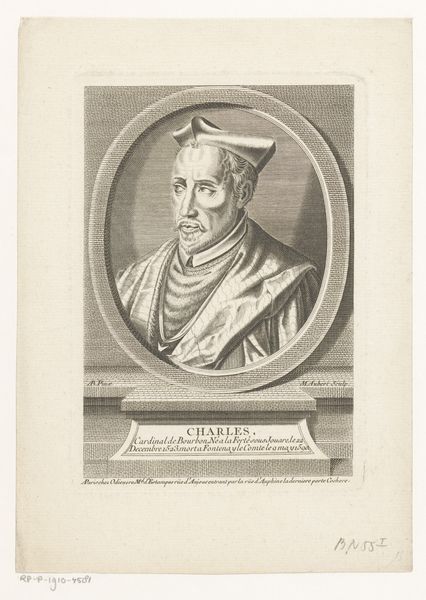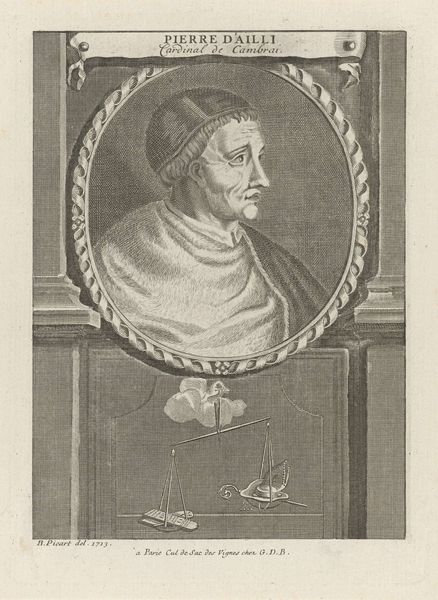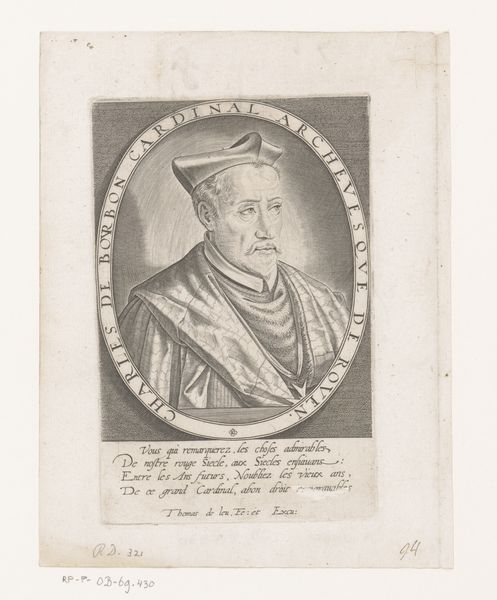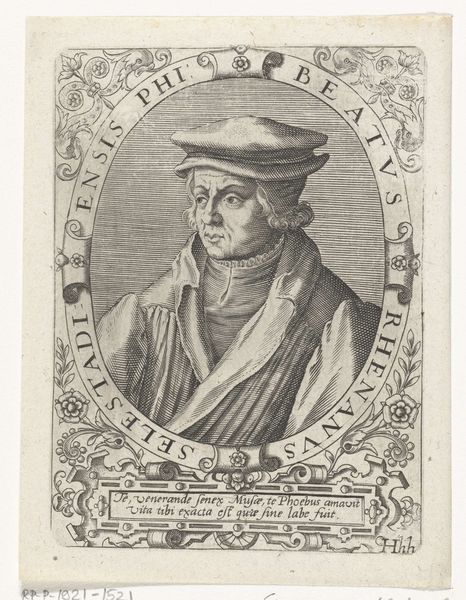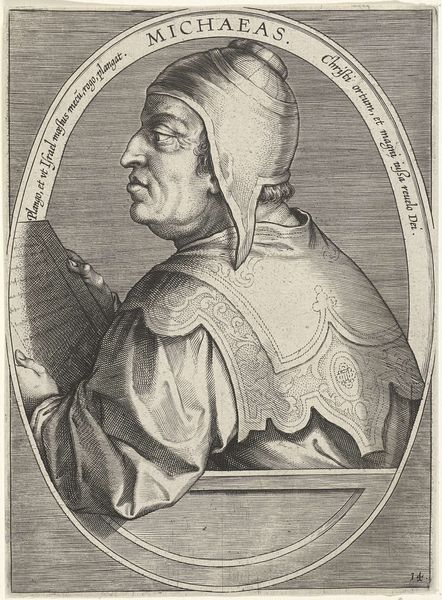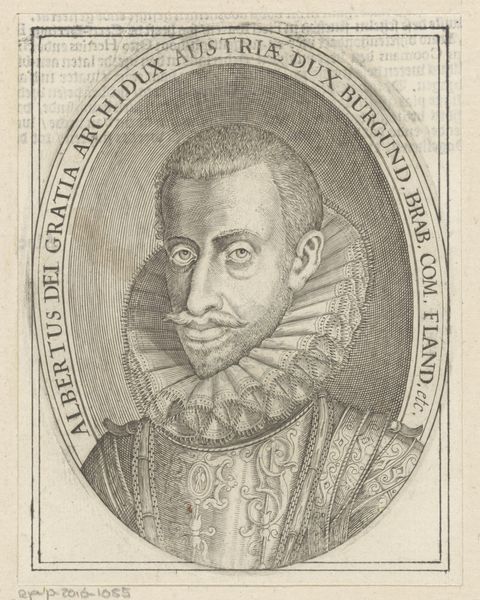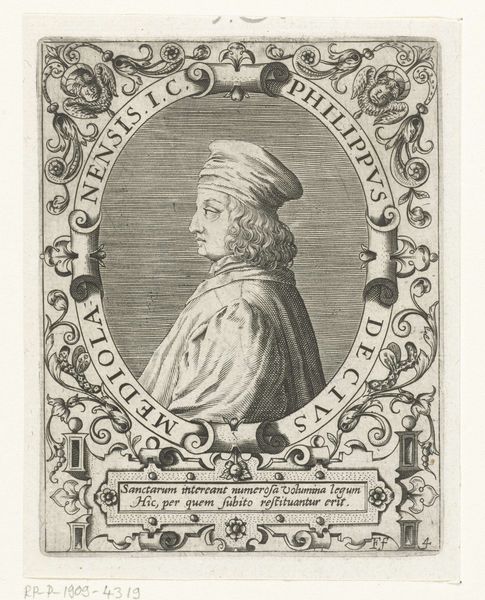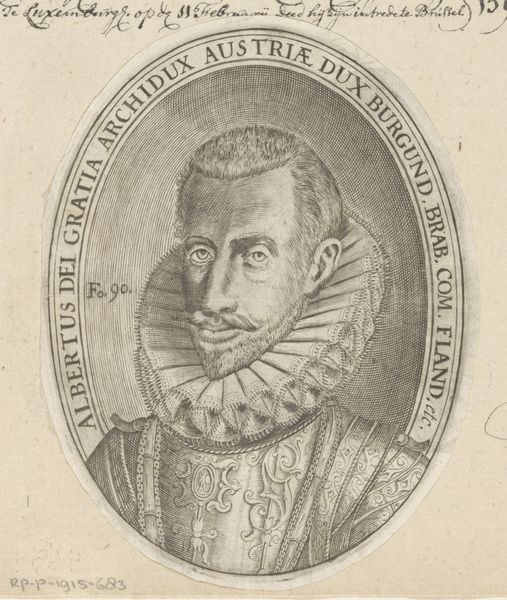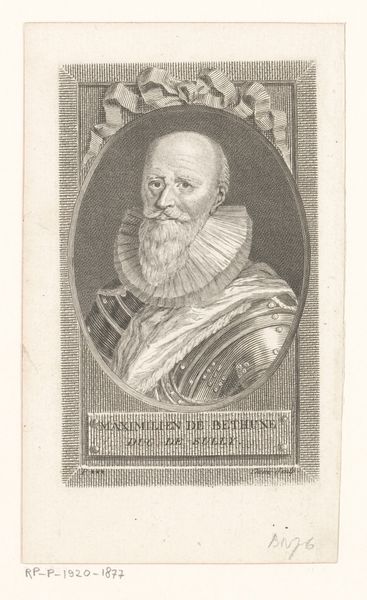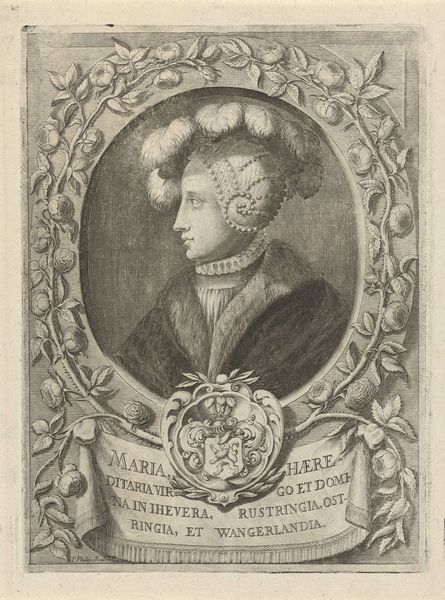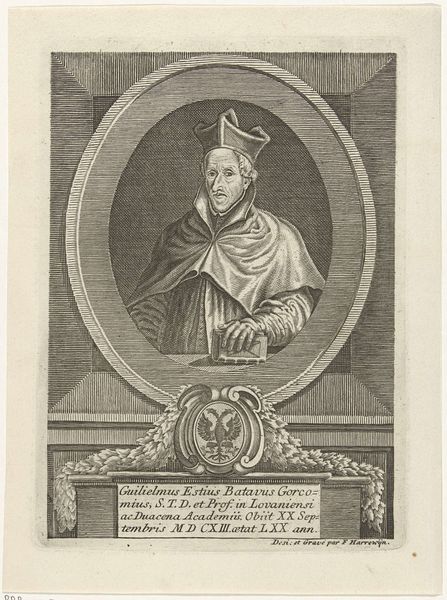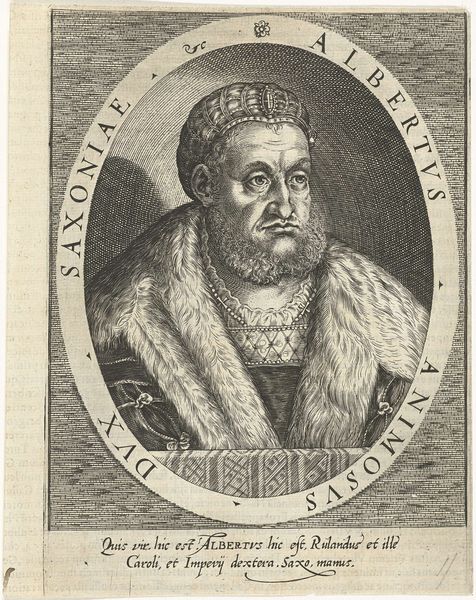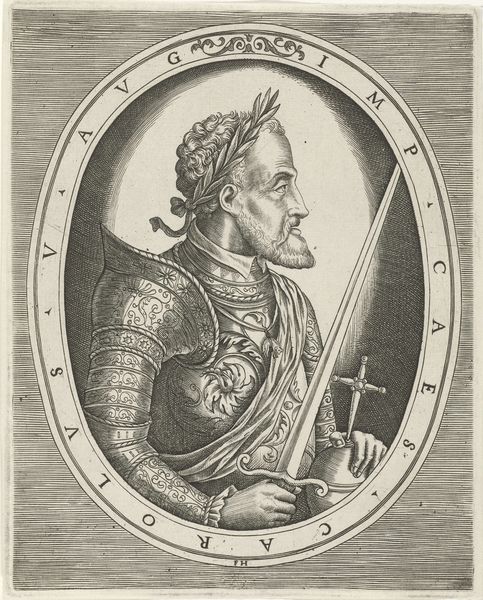
print, engraving
#
portrait
# print
#
old engraving style
#
mannerism
#
geometric
#
line
#
portrait drawing
#
italian-renaissance
#
engraving
Dimensions: height 151 mm, width 124 mm
Copyright: Rijks Museum: Open Domain
Curator: This print, likely dating between 1585 and 1642, is attributed to Agostino Carracci. It’s titled "Portret van Cabrino Fondulo" and offers a glimpse into the Italian Renaissance portrait style through the medium of engraving. Editor: My immediate reaction is struck by how...severe this portrait feels. The meticulous line work gives him such a dignified, yet almost intimidating air. There's something very precise and deliberate about the depiction. Curator: The geometric frame, containing inscriptions about Cabrino Fondulo, frames and adds to that sense of importance and authority you are talking about. The oval shape itself has historically been seen to represent the cosmos, eternity. Here it becomes an almost official symbolic frame. Editor: Indeed, trapping him in the amber of his position and importance. That high, ruffled collar further emphasizes his stature and that very direct profile limits opportunities for interpreting more subtle aspects of character. It speaks volumes about societal roles during this time. How portraiture, especially engravings like these, solidified hierarchical visual culture. Curator: Precisely, this engraving technique itself adds to the historical impact, a means of reproducing and disseminating images of power and prestige. Each carefully etched line serves as a reminder of tradition. Did you notice the way even his hair, or wig perhaps, is constructed as this almost formal monument? Editor: Yes! Even his hairstyle reinforces this monumentality, a cultural statement solidified through the print-making process. Consider who has access to commissioning and possessing prints such as these? Likely powerful, land-owning men that reflect an even more significant imbalance in societal narratives, perhaps explaining its overall intimidating affect? Curator: This engraving then not only depicts an individual but reinforces social frameworks through both visual symbolism and technological distribution. That’s such an interesting paradox here. The piece offers a cultural memory of the past, showing how visual culture upheld and mirrored established power structures. Editor: It underscores the ongoing impact that image reproduction continues to have in the shaping and reinforcing dominant cultural values. A valuable reminder of how art operates within and reflects a network of societal dynamics.
Comments
No comments
Be the first to comment and join the conversation on the ultimate creative platform.

